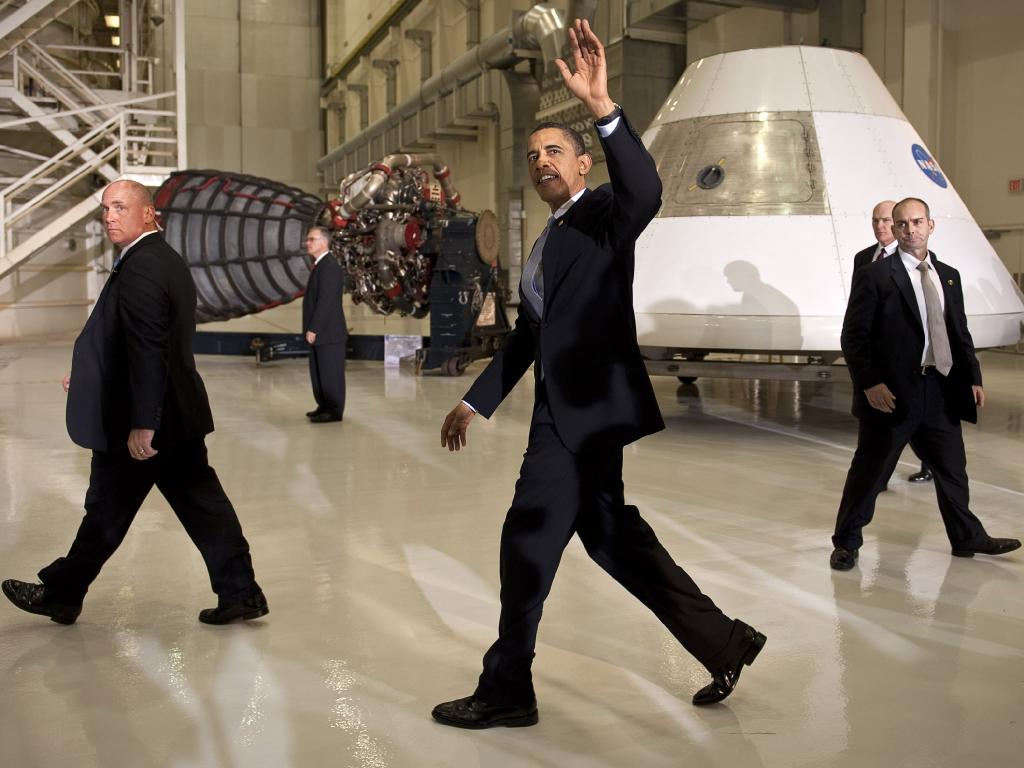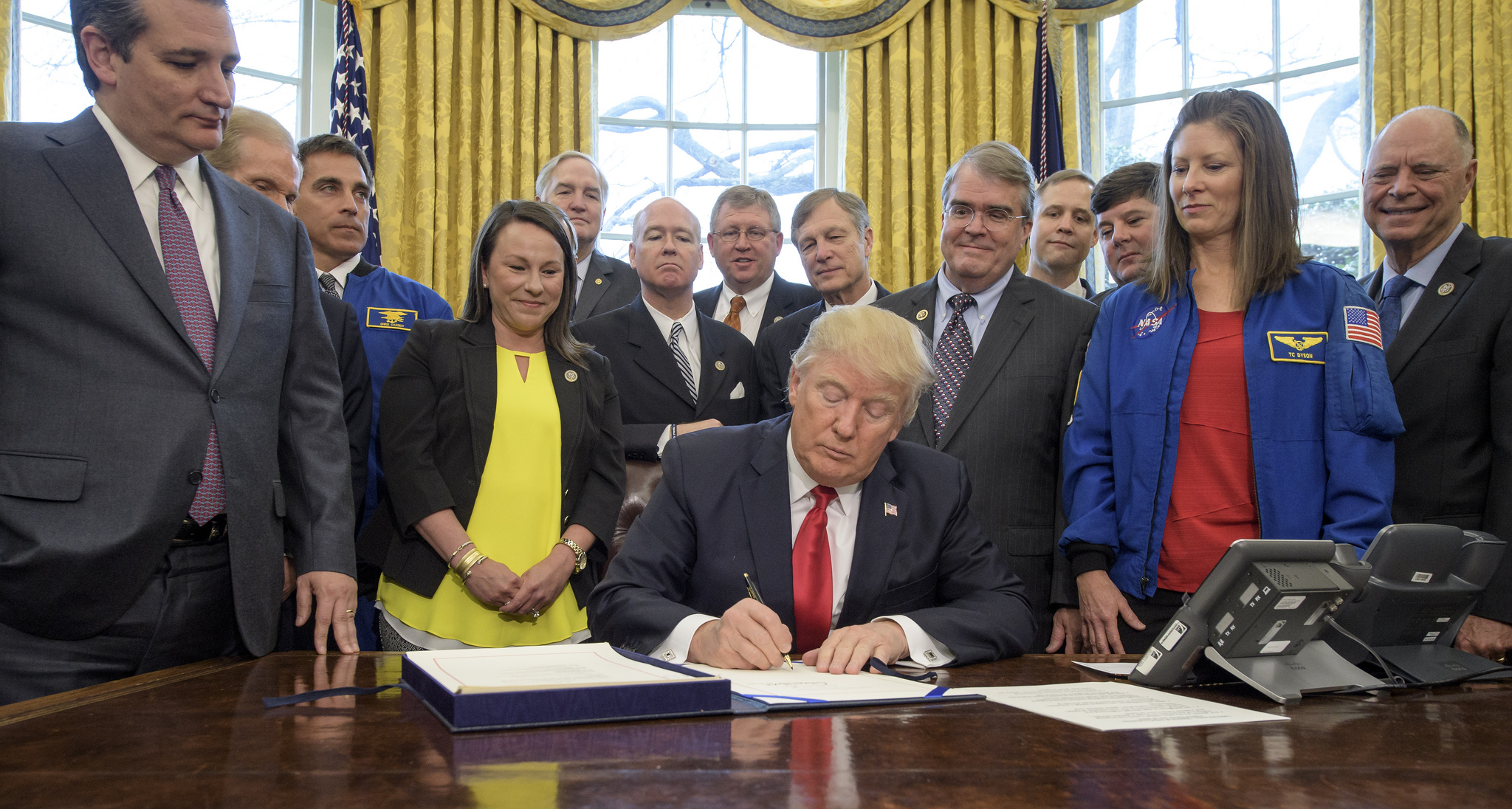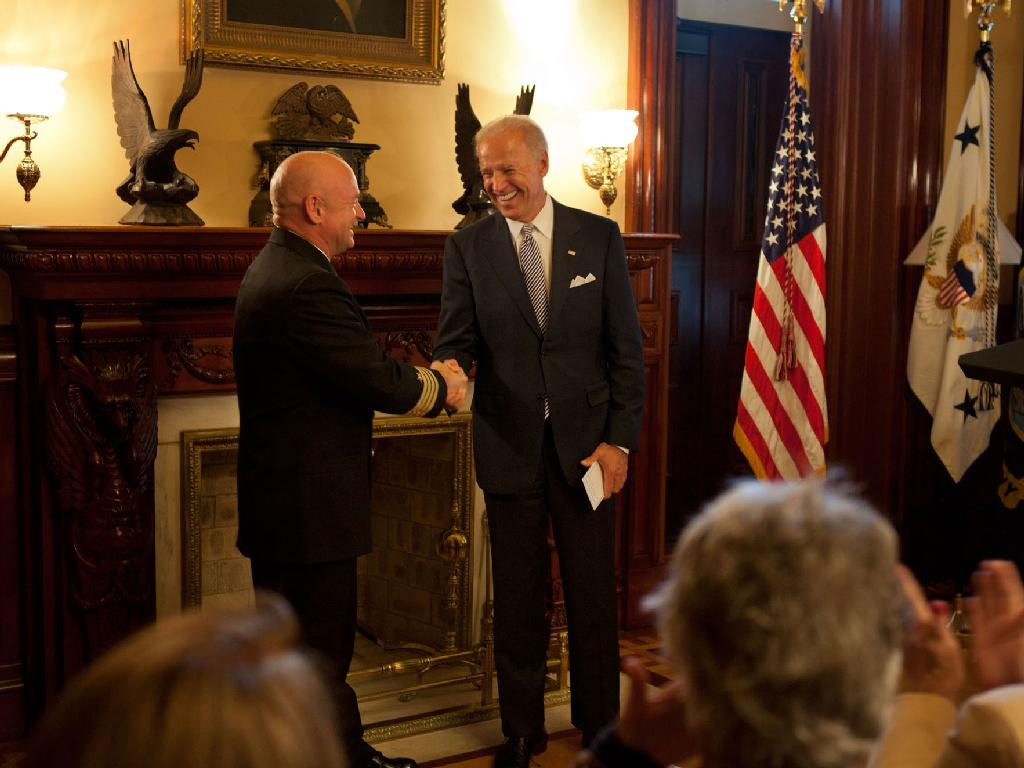Presidential Visions for Space Exploration: From Ike to Biden
Barack Obama (2009-2017)
In 2009, President Barack Obama called for a review of American human spaceflight plans by an expert panel, which came to be known as the Augustine Commission (not to be confused with the similarly named report President George H.W. Bush ordered two decades earlier).
A year later, Obama announced his administration's space policy, which represented a radical departure from the path NASA had been on. The new policy canceled George W. Bush's Constellation program, which the Augustine Commission had found to be significantly behind schedule and over budget. (Obama did support continued development of the Orion spacecraft for use as a possible escape vehicle at the space station, however.)
In place of Constellation, Obama's policy directed NASA to focus on getting humans to an asteroid by 2025 and then on to Mars by the mid-2030s. This entails, in part, developing a new heavy-lift rocket, with design completion desired by 2015.
The new policy also seeks to jump-start commercial spaceflight capabilitites. Obama's plan relies on Russian Soyuz vehicles to ferry NASA astronauts to the space station in the short term after the space shuttles retire in 2011.
But over the long haul, Obama wants this burden shouldered by private American spaceships that have yet to be built. So Obama promised NASA an extra $6 billion over five years, which the agency would use to help companies develop these new craft.
Donald Trump (2017-2021)
President Donald Trump directed NASA to return astronauts to the moon in preparation for future crewed missions to Mars and other locations across our solar system. The directive, which has no set timetable of funding, was unveiled Dec. 11, 2017 when Trump signed Space Policy Directive 1.
In March 2019, the Trump administration unveiled a more lofty target: land the first woman and next man on the moon by 2024. That plan, called the Artemis program, calls for the creation of a small space station in orbit around the moon and extensive cooperation with private companies to build the moon landers, habitats and other gear astronauts would need on the lunar surface.
NASA would us its Orion space capsules and Space Launch System megarocket as core components of the Artemis program, but would also use commercial rockets and vehicles to achieve the goal.
Meanwhile, the Trump administration also officially created the U.S. Space Force in 2019. The Space Force is a new branch of the military service aimed at organizing and overseeing U.S. military assets and operations in space.
Joe Biden (2021-present)
President-elect Joe Biden's administration has not released a detailed space policy for the next four years, but the Democratic Party did release a draft platform in 2020 that expressed support for NASA and space exploration in general.
"Democrats continue to support the National Aeronautics and Space Administration (NASA) and are committed to continuing space exploration and discovery," party officials wrote in the draft platform, which you can read here.
Breaking space news, the latest updates on rocket launches, skywatching events and more!
"We believe in continuing the spirit of discovery that has animated NASA's human space exploration, in addition to its scientific and medical research, technological innovation, and educational mission that allows us to better understand our own planet and place in the universe," it continued.
According to a SpaceNews report, Biden is expected to focus on climate science over the moon-by-2024 lunar exploration goals set by the Trump administration. Biden administration officials have signaled an intent to rejoin the international Paris Agreement to fight climate change amid other efforts, according to CNBC.
Some major space efforts, such as the new Space Force branch of the U.S. military formed under Trump, are expected to continue for now. Biden has not yet named new NASA administrator. Trump's NASA chief Jim Bridenstine will be leaving the agency at the end of January 2021.
Also unclear is if the National Space Council will continue as is under Vice President-elect Kamala Harris. The Trump administrator revived the NSC in 2017 after 24 years of inactivity. Vice President Mike Pence chaired the council during Trump's presidency.

Michael Wall is a Senior Space Writer with Space.com and joined the team in 2010. He primarily covers exoplanets, spaceflight and military space, but has been known to dabble in the space art beat. His book about the search for alien life, "Out There," was published on Nov. 13, 2018. Before becoming a science writer, Michael worked as a herpetologist and wildlife biologist. He has a Ph.D. in evolutionary biology from the University of Sydney, Australia, a bachelor's degree from the University of Arizona, and a graduate certificate in science writing from the University of California, Santa Cruz. To find out what his latest project is, you can follow Michael on Twitter.



